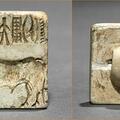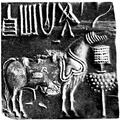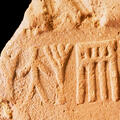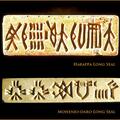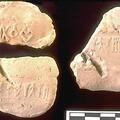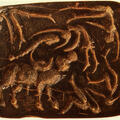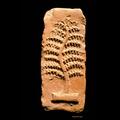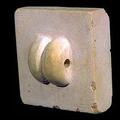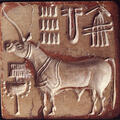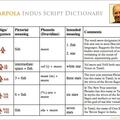Seal with Two-Horned Zebu Bull
"At their best, it would be no exaggeration to describe them as little masterpieces of controlled realism, with a monumental strength in one sense out of all proportion to their size and in another entirely related to it," wrote Sir Mortimer Wheeler.
Seal with Two-Horned Zebu Bull and Inscription, ca. 2000 BCE. As Mark Kenoyer writes "The majestic zebu bull, with its heavy dewlap and wide curving horns is perhaps the most impressive motif found on the Indus seals.

